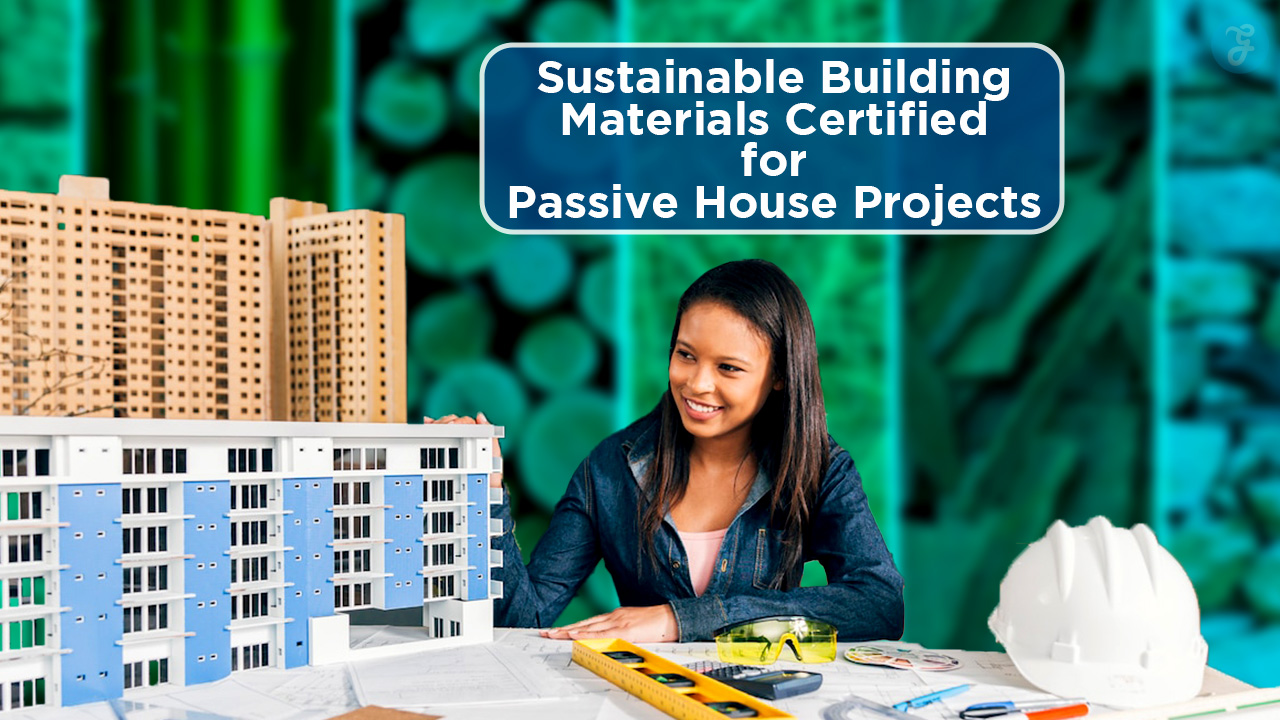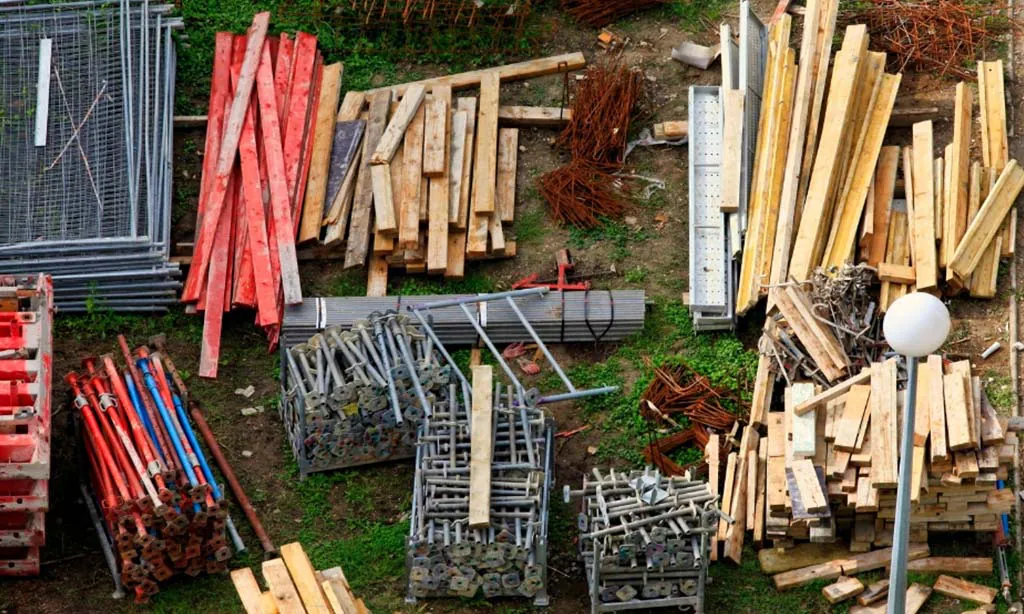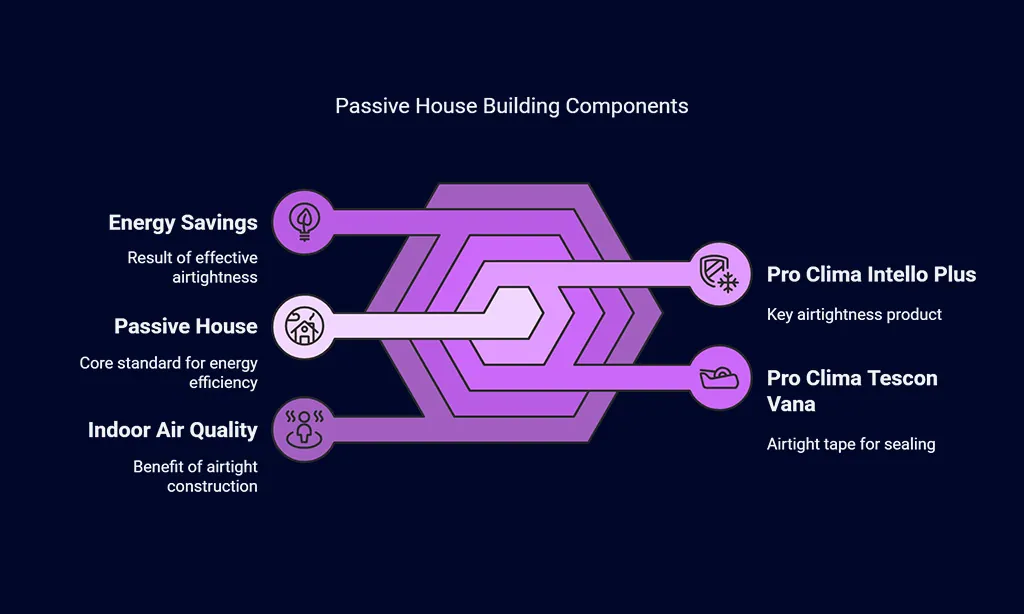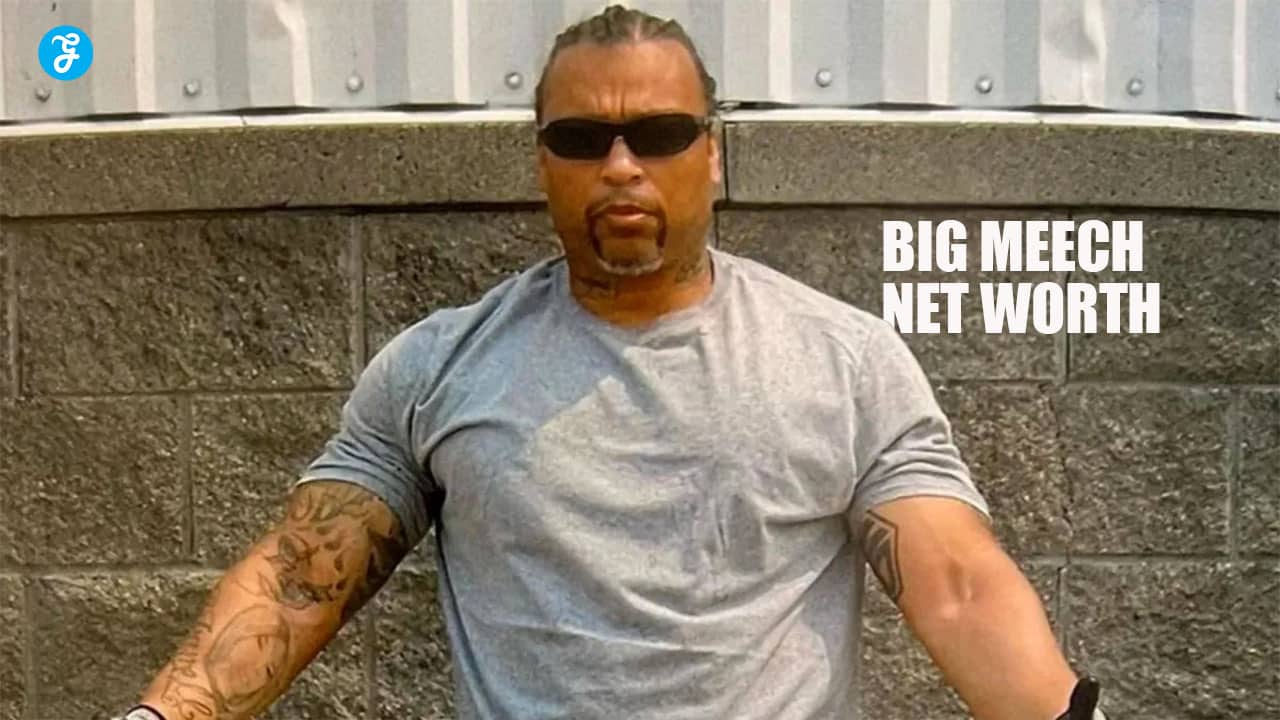Are you struggling with high energy bills? Passive Houses need great build and energy use. This blog post will show you how to choose the very best stuff for your home. Read on to discover more about Sustainable Building Materials Certified For Passive House Projects.
Key Takeaways
- Passive Houses use less energy. They can cut energy use by 90%.
- ROCKWOOL insulation helps with Passive House plans. It cuts thermal bridges.
- Glavel Foam Glass Gravel is good for energy efficiency. It also helps lower emissions.
- Zola and EuroLine make windows and doors. These help meet Passive House needs.
- Pro Clima makes air barrier products. Tstud wood and Passive EcoWall® help build strong, green homes.
Importance of Sustainable Building Materials in Passive House Projects
Healthy homes start with smart choices. Sustainable building materials matter for passive house projects. These materials help lower the carbon footprint. They also boost energy efficiency in buildings.
Passive houses cut energy use by up to 90%. This is when compared to regular homes. It uses less energy for heating and cooling. Such designs also help reduce greenhouse gas emissions.
Passive house standards focus on healthy buildings. Build quality matters. Also, energy efficiency matters. Using green building techniques improves indoor air quality. Plus, savings on energy may offset upfront construction costs.
In time, property value rises. Maintenance costs also fall. So, choose sustainable materials when building a passive house. Tools such as building envelope and ventilation system can help.
Certified Insulation Materials
Proper insulation is key. It helps Passive Houses save energy.
ROCKWOOL
Think about ROCKWOOL for sustainable insulation. ROCKWOOL makes insulation that fits Passive House plans. These plans boost energy efficiency. The Passive House Association of Ireland knows ROCKWOOL.
Passivhaus Trust also knows them. ROCKWOOL aids airtightness and cuts thermal bridges. Thermal bridges waste energy.
The Passive EcoWall uses ROCKWOOL’s insulation items. This boosts energy use and coziness inside. Builders can get Passive House certification with ROCKWOOL. This lowers energy demands and protects our earth.
Use ROCKWOOL to meet passive house standard. It helps lower greenhouse gas emissions.
Glavel Foam Glass Gravel
Glavel Foam Glass Gravel helps Passive House projects. It can work with natural insulation in a Passive EcoWall. The product also cuts down on emissions. This includes emissions from making building materials.
Glavel helps make buildings more green.
These foamed gravel products are key to energy efficiency. Glavel has low embodied energy. This helps meet Passive House goals. Using Glavel helps make energy-efficient buildings.
It also helps with sustainable building solutions.
High-Performance Windows and Doors
Want great thermal comfort and natural light? Then, explore windows and doors that meet Passive House standards.
Zola Windows
Zola Windows makes windows, and they make doors. These are for Passive House projects. The company cares about energy efficiency. It also focuses on making things that last. Zola Windows works with many makers in the Passive House market.
The goal is to cut down on heat loss. Products also block air from leaking. They help Passive House construction grow in the U.S. Contact Zola Windows for details. Ask them for quotes on Passive House solutions.
These windows boast high-performance. They are European windows. These windows help with energy-efficient design. They help achieve passive house certification.
EuroLine Windows
designs windows for Passive House projects. They make high-performance windows. These windows help with energy efficiency. EuroLine Windows is part of a group. This group helps people find sustainable materials.
These materials are certified for Passive House standards. They help builders get Passive House certification. This work reduces ecological footprints.
Want better airtightness? EuroLine Windows products can help. Good airtightness is important for energy efficiency. This is key in Passive House building. The company works with other manufacturers.
Together, they find high-performance solutions. These solutions work in new buildings. They also work in home retrofit projects.
Advanced Vapor and Air Barrier Solutions
Air and moisture control matters a lot. See great help for your walls with vapor and air barriers.
Pro Clima Intello Plus
Pro Clima Intello Plus is a top product for Passive House projects. It is a certified Passive House product. Think of it as key airtightness. This helps with energy efficiency. It is vital in Passive House builds.
This product boosts energy savings. It keeps indoor air quality high. Use Pro Clima Tescon Vana tape with it. This will seal everything tight. Good air sealing is key to a good thermal envelope.
Pro Clima Tescon Vana
Pro Clima Tescon Vana is a great tool for airtight tape work. It helps you with passive house certification. It is ideal for passive house projects. This tape is a Passive Certified Component.
It’s meant for airtight tape use. If you want energy savings, use this tape. It helps air sealing in passive house standard builds. With it, your indoor air quality can be better.
Innovative Structural Materials
Want to build with strong, new stuff? Check out materials that make your place solid.
Tstud Engineered Wood
Tstud engineered wood boosts energy efficiency. These studs reduce thermal bridging. They help meet passive house standards. Using Tstud can cut energy consumption.
These engineered wood studs are innovative structural materials. They help create a high-performance building envelope. They help lower heating and cooling systems costs. Consider Tstud for your next sustainable building project.
Passive EcoWall
Passive EcoWall helps build strong passive houses. These walls and roofs have a diffusion-open design, important for energy-efficient building design. Gutex woodfibre boards create the base.
Finsa airtight racking boards seal it tight. Pro Clima solutions add extra protection.
These sustainable building materials can reach U-values of 0.146 W/mK. That is with 60mm Multitherm insulation and 175mm studs. Thermal resistances range from 0.15 W/mK to 0.10 W/mK.
Thermafleece sheep’s wool and Thermo Hemp Combi Jute insulate it well. You can adjust frame depth and insulation thickness.
Takeaways
These materials point us to a greener future, so use them! You can build better with smart material choices and boost efficiency. Using eco-friendly tools helps the planet and saves you money.
Now you can build a cozy, efficient dwelling and help create a more sustainable earth.
FAQs
1. What makes a house a passive house?
A passive house uses very little energy. It has great energy efficiency. This helps with energy savings.
2. What are sustainable building materials?
These are green-building options. They lower greenhouse gas emissions. They help the environment.
3. How does passive house certification work?
It means a building meets the passive house standard. Wolfgang Feist helped create this standard. Passivhaus Austria also helps.
4. What is thermal bridging?
Thermal bridging lets heat escape. Good sustainable design stops this. Thermally broken materials help.
5. Why is indoor air quality important?
Good air quality makes you healthier. An energy recovery ventilator helps. So does heat recovery ventilation.
6. Can I save money with a passive house?
Yes, you can reduce energy consumption. You can also lower heating and cooling systems costs. Net zero energy is the goal.











































